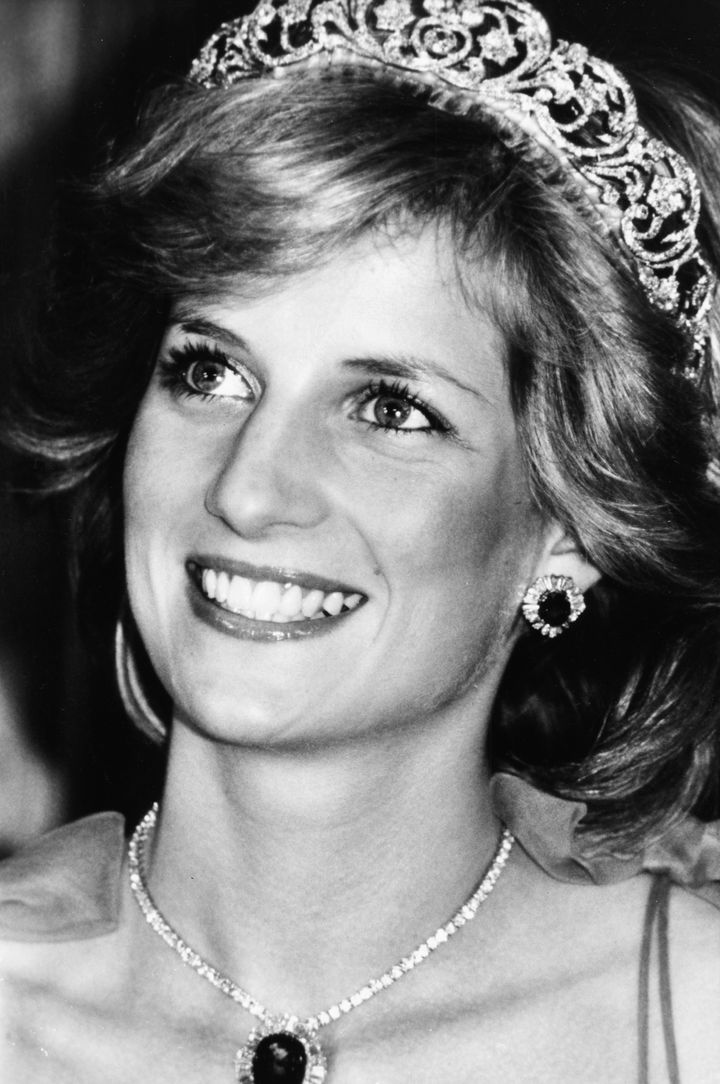Once upon a time there was a prince who wanted to marry a princess; but she would have to be a real princess. He travelled all over the world to find one, but nowhere could he get what he wanted. There were princesses enough, but it was difficult to find out whether they were real ones.

Princess Diana
Diana was not born Her Royal Highness the Princess of Wales. She was born Diana Frances Spencer, on the 1st of July, 1961, at Park House near Sandringham, Norfolk. She had two sisters, a brother, and loved to swim and her school. When she moved to London she worked as a nanny, kindergarten teacher, sometimes cook.
One evening a terrible storm came on; there was thunder and lightning, and the rain poured down in torrents. Suddenly a knocking was heard at the city gate, and the old king went to open it.
Diana and Charles met when she was sixteen, on a probably rainy November day. Four years later they were engaged, then married. On the 29th of July, 1981, Diana became a princess.
But, good gracious! What a sight the rain and the wind had made her look. The water ran down from her hair and clothes; it ran down into the toes of her shoes and out again at the heels.
Diana was the first Englishwoman to marry an heir apparent in 300 years, and the first royal bride to have a paying job - at the kindergarten - before she was married.
And yet she said that she was a real princess.
“Well, we’ll soon find that out,” thought the old queen.
But she said nothing, went into the bedroom, took all the bedding off the bedstead, and laid a pea on the bottom; then she took twenty mattresses and laid them on the pea, and then twenty eider-down beds on top of the mattresses.
Diana left her life – family, friends, home, work - and moved into a palace. She performed her royal duties and responsibilities beside her husband, Prince Charles of Wales. Regular public appearances, functions, travel, hospitals, schools, campaigns,
On this the princess had to lie all night. In the morning she was asked how she had slept.
'Oh, very badly!' said she. 'I have scarcely closed my eyes all night.'
Diana was closely involved with over a hundred charities. She brought the world’s attention to serious, taboo diseases like HIV/AIDS and leprosy, dispelling myths and the stigma surrounding both by shaking hands, gloveless, with victims. In 1987, she opened the first HIV/Aids hospital unit in the United Kingdom, and till her death in 1997 remained the patron of Leprosy Mission England.
She worked for the youth, the drug addicts, the elderly, the cancer patients, and the homeless. She took both her sons to the shelters of Centrepoint, which has helped over 125,000 young people off the streets. She campaigned for animal rights and was the president of Great Ormond Street Hospital for Children, a patron of the British Red Cross, the Royal Academy of Music, the English National Ballet, the Museum of Natural History.
She drove the International Campaign to Ban Landmines and the signing of the Ottawa Treaty, through which 122 countries pledged not to use, stockpile, produce and transfer landmines. She brought the world’s attention with her to the victims of war torn Cambodia, Bosnia, Angola. Since her death, in Angolaalone, 92,000 landmines, 800 minefields and 162,000 shells, bombs and missiles have been removed.
Now they knew that she was a real princess because she had felt the pearight through the twenty mattresses and the twenty eider-down beds.
Nobody but a real princess could be as sensitive as that.
Diana and Charles were officially divorced on the 28th of August, 1996. She received a 17 million pound settlement but was stripped of the title ‘Royal Highness.’ She was killed in a car crash a year later in Paris, on the 31st of August twenty Augusts ago. She had once said: ‘I always knew I'd never be the next queen. I’d like to be a queen of people's hearts.’
Twenty years on, Diana Frances Spencer is still called ‘The People’s Princess,’ her legacy as powerful and simple as one of love and compassion. If I ever have a daughter, that is the kind of princess I would like her to aspire to be, the kind of story I would tell her before she goes to sleep.
So the prince took her for his wife, for now he knew that he had a real princess; and the pea was put in the museum, where it may still be seen, if no one has stolen it.
There, that is a true story.
- Hans Christians Anderson, The Princess and the Pea
